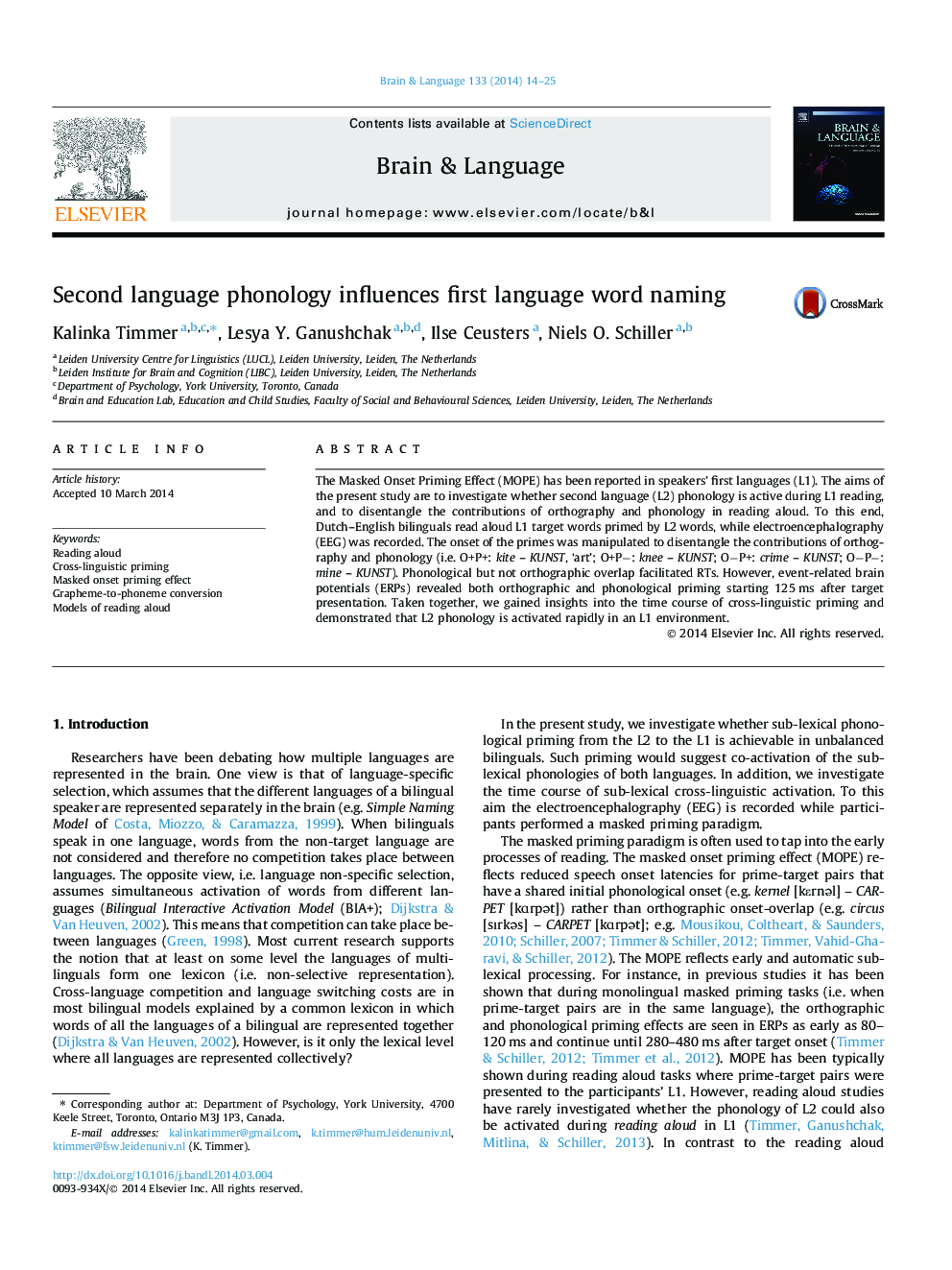| Article ID | Journal | Published Year | Pages | File Type |
|---|---|---|---|---|
| 7284809 | Brain and Language | 2014 | 12 Pages |
Abstract
The Masked Onset Priming Effect (MOPE) has been reported in speakers' first languages (L1). The aims of the present study are to investigate whether second language (L2) phonology is active during L1 reading, and to disentangle the contributions of orthography and phonology in reading aloud. To this end, Dutch-English bilinguals read aloud L1 target words primed by L2 words, while electroencephalography (EEG) was recorded. The onset of the primes was manipulated to disentangle the contributions of orthography and phonology (i.e. O+P+: kite - KUNST, 'art'; O+Pâ: knee - KUNST; OâP+: crime - KUNST; OâPâ: mine - KUNST). Phonological but not orthographic overlap facilitated RTs. However, event-related brain potentials (ERPs) revealed both orthographic and phonological priming starting 125Â ms after target presentation. Taken together, we gained insights into the time course of cross-linguistic priming and demonstrated that L2 phonology is activated rapidly in an L1 environment.
Related Topics
Life Sciences
Neuroscience
Biological Psychiatry
Authors
Kalinka Timmer, Lesya Y. Ganushchak, Ilse Ceusters, Niels O. Schiller,
